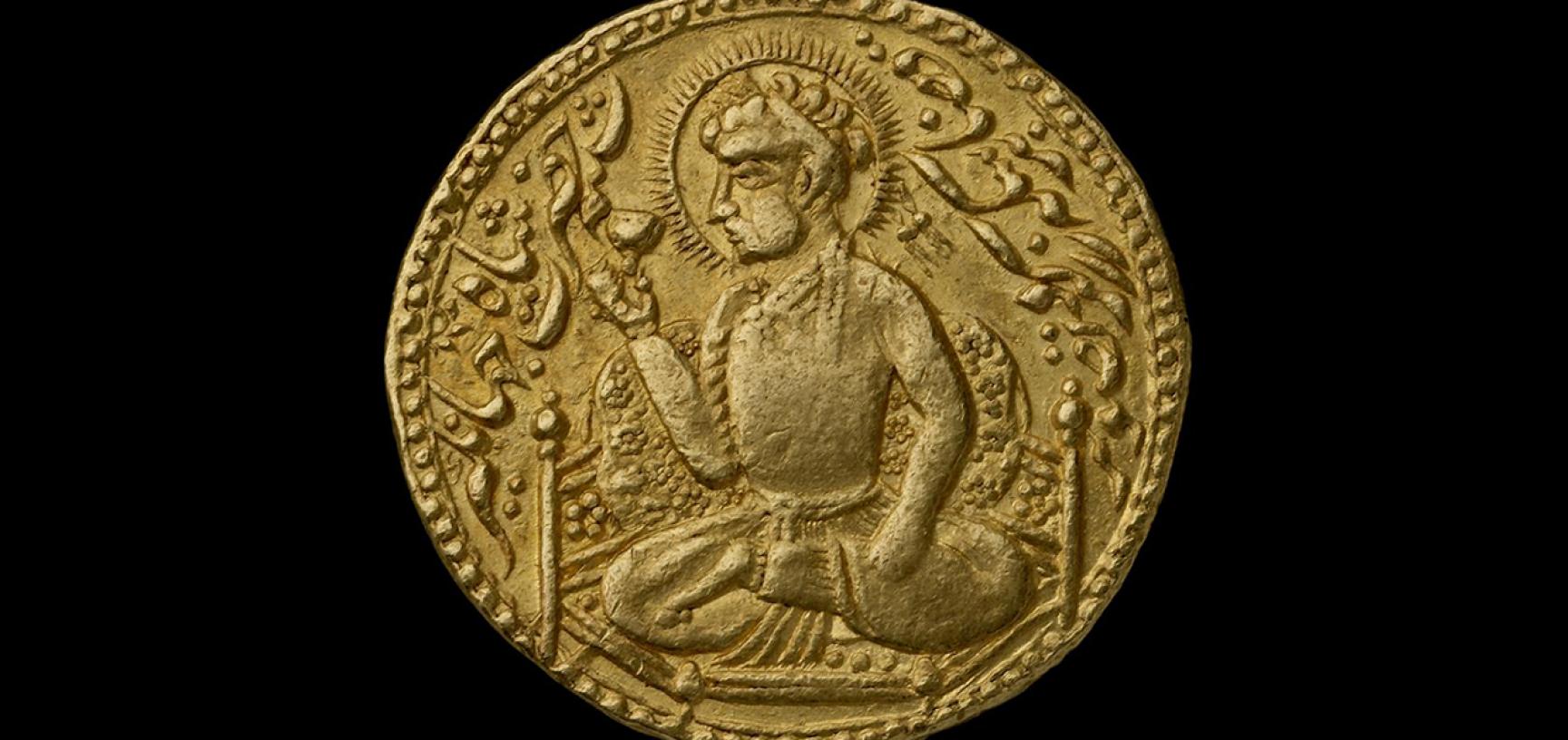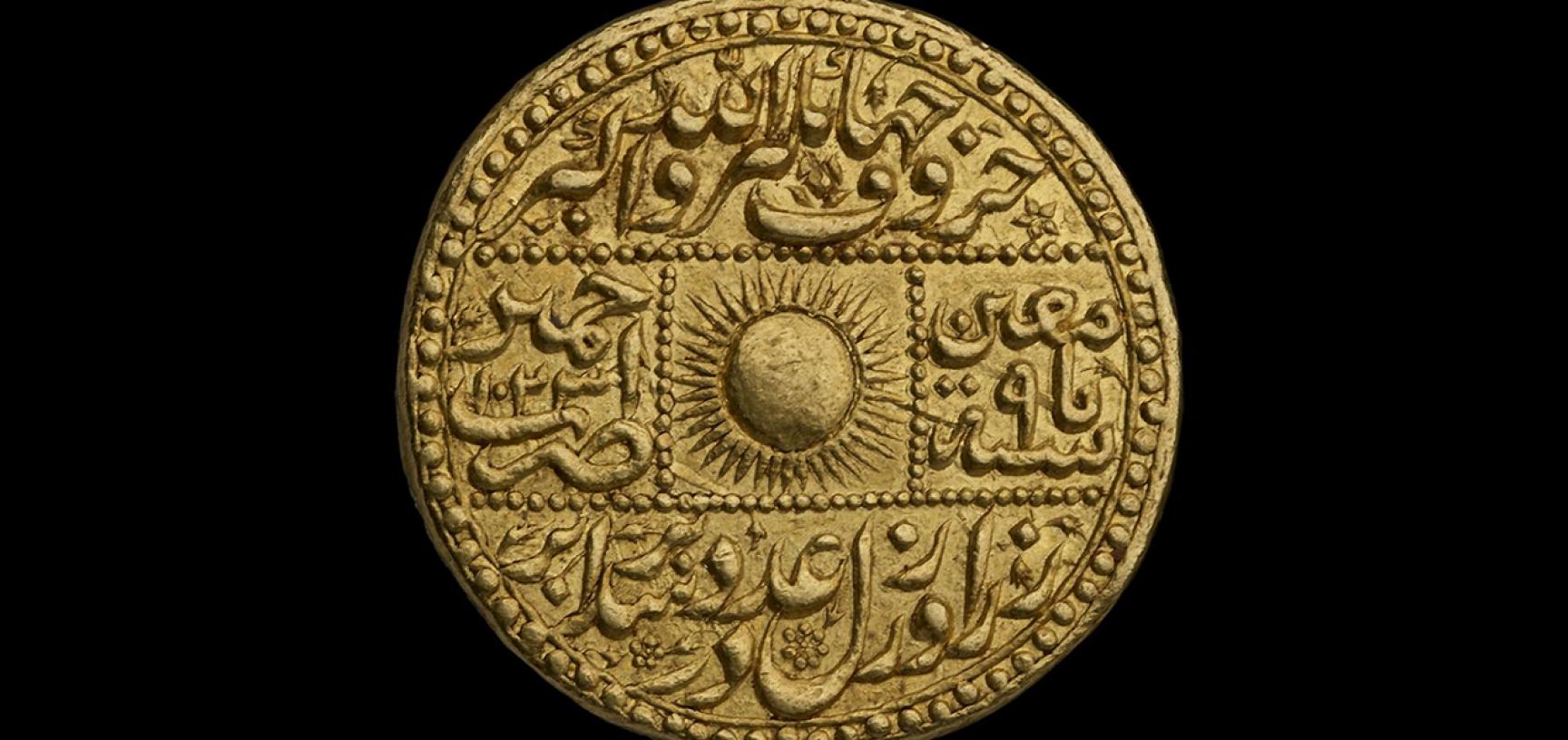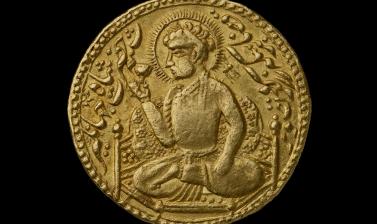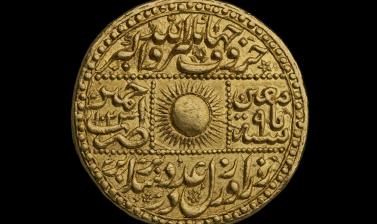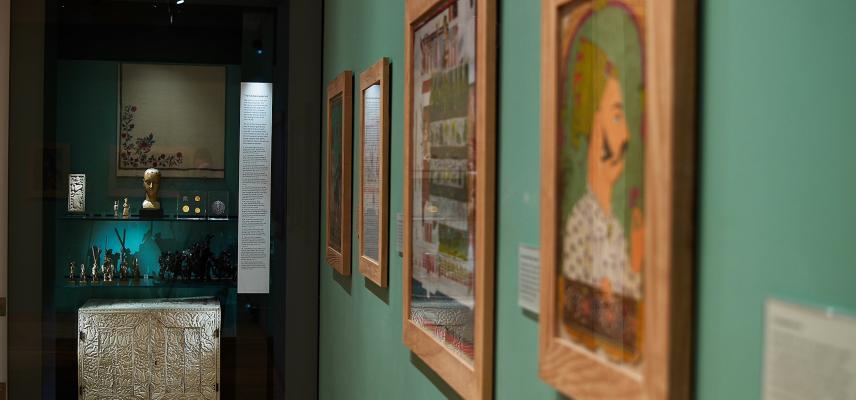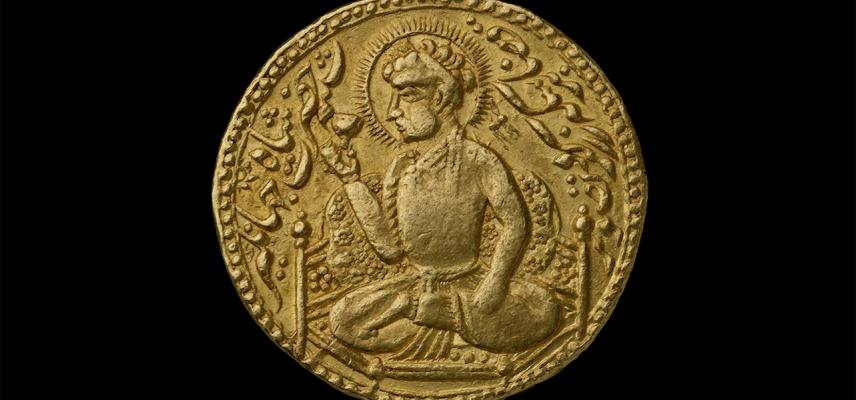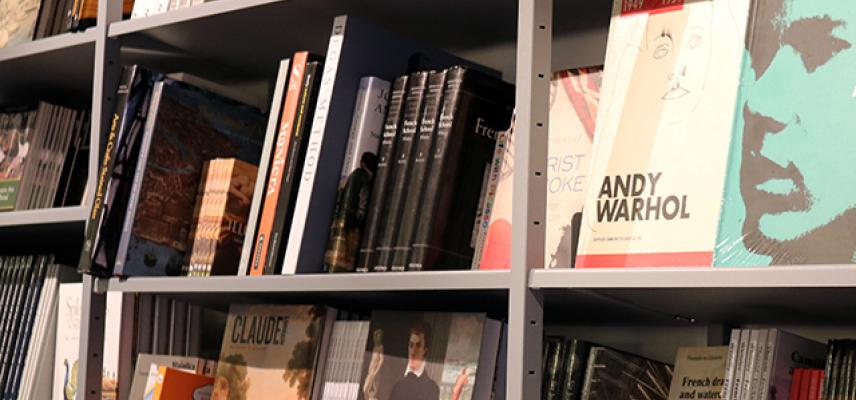COIN OF EMPEROR JAHANGIR
A gift for the Emperor’s followers
The Emperor Jahangir (r. 1605–27) showed exceptional engagement with his coinage, which represents the height of Mughal Indian numismatic art in calligraphy and design. The front of this example features a portrait of Jahangir sitting cross-legged, reclining against a bolster on a hexagonal throne and holding a goblet-like ornament in his hand. It has been described as a wine goblet, showing the Emperor's attachment to his favourite pastime. The Farsi inscription around the portrait reads, ‘Destiny has made the picture of a likeness of venerable king Jahangir on this gold coin’. Jahangir issued coins bearing his portrait, by his own admission, to be given to his followers as a special gift which they could ‘wear on their turbans or sashes’ to show that they had been graced by imperial favour.
On the reverse is a central sun burst with compartments on either side. The one on the left mentions Ajmer as the place where the coin was made (Jahangir had moved his court there in 1615–19) and 1023, the Islamic (Hijri) year of its issue. On the right are the words ‘O Assister’, followed by ‘Year 9’, the year of the reign. The Farsi inscription reads ‘The words “Jahangir” and “Allahu Akbar” are equal in value till the Day of Judgement’. Based on the so-called Abjad system, which applied numerical value to each letter of the alphabet, the words ‘Jahangir’ and ‘Allahu Akbar’ (‘Allah is greater’) were considered to add up to the same total.
Coin of Emperor Jahangir
Ajmer
Ninth year of reign
Gold
20.5 mm
On deposit from Christ Church, Oxford
View on our online Collection Online Site: HCR7680
License this image - visit the Ashmolean Image Library


